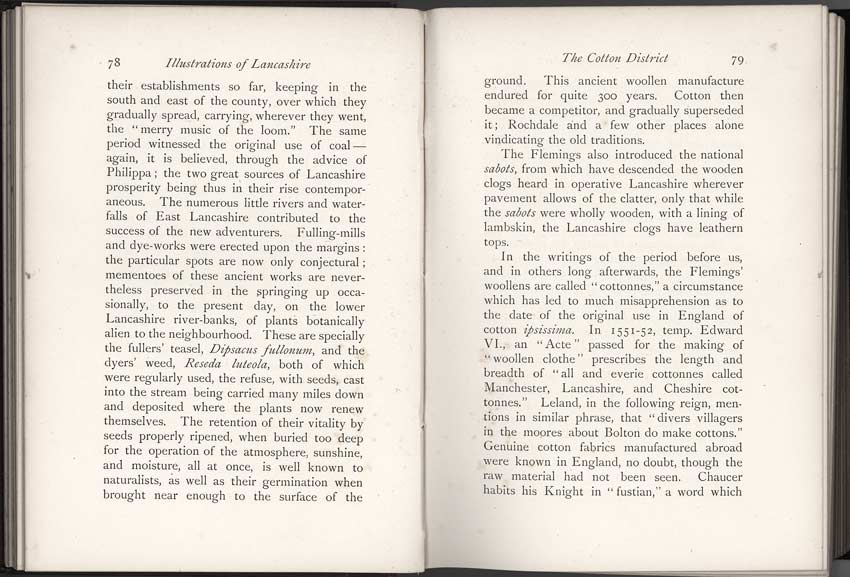
Scan and page transcript from:
LANCASHIRE - Brief Historical and Descriptive Notes
by Leo H. Grindon
Pub. 1892
pages 78-79 |
78 Illustrations of Lancashire their establishments so far, keeping in the south and east of the county, over which they gradually spread, carrying, wherever they went, the "merry music of the loom." The same period witnessed the original use of coal - again, it is believed, through the advice of Philippa; the two great sources of Lancashire prosperity being thus in their rise contemporaneous. The numerous little rivers and waterfalls of East Lancashire contributed to the success of the new adventurers. Fulling-mills and dye-works were erected upon the margins: the particular spots are now only conjectural; mementoes of these ancient works are nevertheless preserved in the springing up occasionally, to the present day, on the lower Lancashire riverbanks, of plants botanically alien to the neighbourhood. These are specially the fullers' tease], Dipsacus fullonum, and the dyers' weed, Reseda luteola, both of which were regularly used, the refuse, with seeds, cast into the stream being carried many miles down and deposited where the plants now renew themselves. The retention of their vitality by seeds properly ripened, when buried too deep for the operation of the atmosphere, sunshine, and moisture, all at once, is well known to naturalists, as well as their germination when brought near enough to the surface of the |
The Cotton District 79 ground. This ancient woollen manufacture, endured for quite 300 years. Cotton then became a competitor, and gradually superseded it; Rochdale and a few other places alone vindicating the old traditions. |
